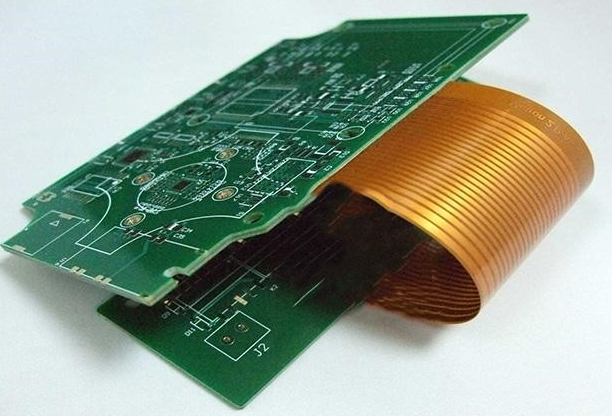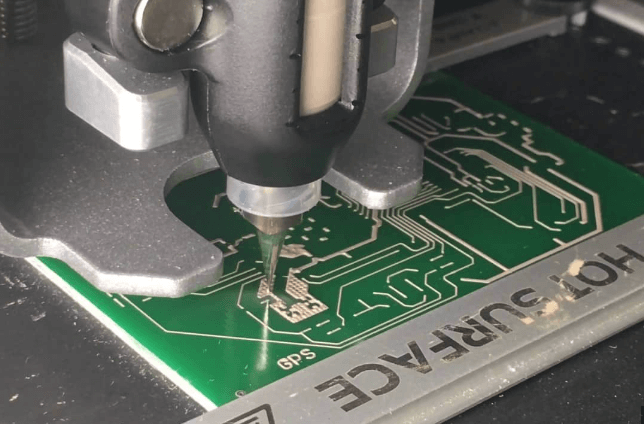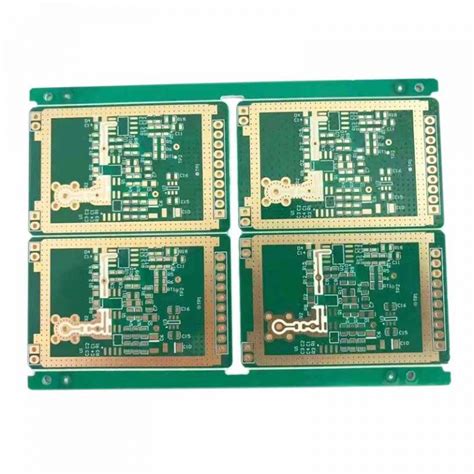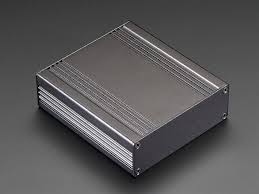Flex pcb with components
Advantages Of Using Flex PCB With Components In Modern Electronics
The integration of flexible printed circuit boards (Flex PCBs) with components has revolutionized the landscape of modern electronics, offering a myriad of advantages that cater to the evolving demands of contemporary technology.
One of the most significant benefits of using Flex PCBs with components is their inherent flexibility, which allows for innovative design possibilities that rigid PCBs simply cannot accommodate.
This flexibility enables the creation of compact, lightweight, and highly efficient electronic devices, which are essential in today’s market where miniaturization and portability are paramount.
Moreover, Flex PCBs with components provide enhanced reliability and durability.
The flexible nature of these circuits allows them to withstand mechanical stress and vibrations better than their rigid counterparts. This is particularly advantageous in applications where the electronic device is subject to constant movement or harsh environmental conditions, such as in automotive, aerospace, and wearable technology. The ability to bend and flex without compromising the integrity of the circuit ensures that the device remains functional over a longer period, thereby reducing the need for frequent repairs or replacements.
In addition to their mechanical advantages, Flex PCBs with components also offer superior electrical performance.
The design of Flex PCBs allows for shorter and more direct routing of electrical paths, which minimizes signal loss and electromagnetic interference. This results in improved signal integrity and faster transmission speeds, which are critical in high-performance applications such as telecommunications and data processing. Furthermore, the integration of components directly onto the Flex PCB reduces the need for additional connectors and interconnections, thereby decreasing the overall resistance and enhancing the efficiency of the electronic device.
Another notable advantage of using Flex PCBs with components is the potential for cost savings in both manufacturing and assembly processes.
The ability to integrate multiple components onto a single flexible substrate reduces the complexity of the assembly process, leading to lower labor costs and shorter production times. Additionally, the reduction in the number of connectors and interconnections not only simplifies the design but also decreases the material costs. This cost-effectiveness is particularly beneficial for mass production, where even small savings per unit can translate into significant financial benefits.
Furthermore, Flex PCBs with components contribute to the overall sustainability of electronic devices.
The reduction in material usage and the potential for longer device lifespans align with the growing emphasis on environmentally friendly practices in the electronics industry. By minimizing waste and promoting the efficient use of resources, Flex PCBs support the development of greener technologies.
In conclusion, the advantages of using Flex PCBs with components in modern electronics are manifold. Their flexibility, reliability, and superior electrical performance make them an ideal choice for a wide range of applications. The cost savings in manufacturing and assembly, coupled with their contribution to sustainability, further underscore their value in the contemporary technological landscape. As the demand for more compact, efficient, and durable electronic devices continues to grow, the adoption of Flex PCBs with components is likely to become increasingly prevalent, driving innovation and progress in the field of electronics.
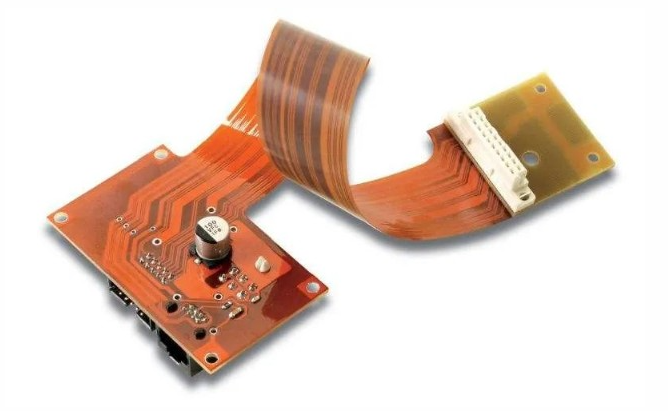
Design Considerations For Flex PCB With Integrated Components
When designing a flexible printed circuit board (flex PCB) with integrated components, several critical considerations must be taken into account to ensure optimal performance and reliability.
Flex PCBs offer numerous advantages, including reduced weight, space savings, and enhanced flexibility, making them ideal for applications in various industries such as aerospace, medical devices, and consumer electronics. However, the integration of components onto a flex PCB introduces additional complexities that must be meticulously addressed during the design phase.
One of the primary considerations is the selection of materials.
The substrate material for flex PCBs is typically polyimide, which offers excellent thermal stability and mechanical flexibility. However, the choice of adhesive and coverlay materials is equally important, as these must withstand the thermal and mechanical stresses encountered during both the manufacturing process and the operational life of the device. The adhesive must provide strong bonding without compromising the flexibility of the circuit, while the coverlay must protect the circuitry from environmental factors such as moisture and chemicals.
Another crucial aspect is the layout design.
The placement of components on a flex PCB requires careful planning to avoid stress points that could lead to mechanical failure. Components should be strategically positioned to distribute stress evenly across the board, and traces should be routed to minimize bending and twisting. Additionally, the use of teardrop-shaped pads at the junctions of traces and vias can help reduce stress concentrations and improve the overall durability of the circuit.
Thermal management is also a significant concern when integrating components onto a flex PCB.
The flexible nature of the substrate can make heat dissipation more challenging compared to rigid PCBs. Therefore, designers must consider the thermal properties of both the substrate and the components. Techniques such as the use of thermal vias, heat sinks, and thermal interface materials can be employed to enhance heat dissipation and prevent overheating, which could otherwise lead to component failure.
Electrical performance is another key factor that must be addressed.
The flexible nature of the substrate can introduce variations in impedance, which can affect signal integrity. To mitigate this, designers should carefully control the trace width, spacing, and thickness to maintain consistent impedance throughout the circuit. Additionally, the use of ground planes and shielding can help reduce electromagnetic interference (EMI) and ensure reliable signal transmission.
Manufacturability is an essential consideration in the design of flex PCBs with integrated components.
The manufacturing process for flex PCBs differs from that of rigid PCBs, and designers must work closely with manufacturers to ensure that the design can be produced reliably and cost-effectively. This includes considerations such as panelization, which involves arranging multiple circuits on a single panel to optimize material usage and reduce production costs. Furthermore, the assembly process for flex PCBs may require specialized equipment and techniques, such as automated pick-and-place machines capable of handling flexible substrates.
Finally, testing and validation are critical steps in the design process.
Flex PCBs with integrated components must undergo rigorous testing to ensure that they meet the required performance and reliability standards. This includes electrical testing to verify signal integrity and functionality, as well as mechanical testing to assess the durability of the circuit under various bending and flexing conditions. Environmental testing, such as exposure to temperature extremes and humidity, is also necessary to ensure that the circuit can withstand the conditions it will encounter in its intended application.
In conclusion, the design of flex PCBs with integrated components requires a comprehensive approach that addresses material selection, layout design, thermal management, electrical performance, manufacturability, and testing. By carefully considering these factors, designers can create flexible circuits that deliver reliable performance and meet the demands of modern electronic applications.

Manufacturing Process Of Flex PCB With Embedded Components
The manufacturing process of flexible printed circuit boards (Flex PCBs) with embedded components is a sophisticated and intricate procedure that demands precision and expertise. Flex PCBs, known for their ability to bend and twist, are increasingly utilized in various applications, including wearable technology, medical devices, and aerospace systems. The integration of components directly onto these flexible substrates further enhances their functionality and compactness, making them indispensable in modern electronics.
To begin with, the process starts with the selection of appropriate materials.
The base material for Flex PCBs is typically a polyimide film, chosen for its excellent thermal stability and flexibility. This film is coated with a layer of copper, which serves as the conductive material. The thickness of the copper layer can vary depending on the specific requirements of the application. Once the material is prepared, the next step involves designing the circuit layout. Advanced computer-aided design (CAD) software is employed to create precise and intricate circuit patterns that will be transferred onto the flexible substrate.
Following the design phase, the circuit pattern is transferred onto the copper-coated polyimide film through a process called photolithography.
In this process, a photosensitive resist is applied to the copper surface, and the circuit pattern is projected onto the resist using ultraviolet light. The exposed areas of the resist harden, while the unexposed areas remain soft and can be washed away, leaving behind the desired circuit pattern on the copper layer. Subsequently, the exposed copper is etched away using a chemical solution, revealing the final circuit traces.
Once the circuit pattern is established, the next crucial step is the embedding of components.
This involves placing electronic components such as resistors, capacitors, and integrated circuits directly onto the flexible substrate. Surface mount technology (SMT) is commonly used for this purpose. In SMT, components are placed onto the substrate using automated pick-and-place machines, which ensure precise positioning. The components are then soldered onto the circuit using a reflow soldering process, where the entire assembly is passed through a controlled heat source to melt the solder and secure the components in place.
To ensure the reliability and performance of the Flex PCB with embedded components, rigorous testing and inspection are conducted.
Automated optical inspection (AOI) systems are employed to check for any defects in the circuit pattern and component placement. Additionally, electrical testing is performed to verify the functionality of the circuit and ensure that there are no short circuits or open connections. Any identified issues are addressed through rework and repair processes.
The final step in the manufacturing process involves encapsulating the Flex PCB to protect it from environmental factors such as moisture, dust, and mechanical stress. A protective layer of conformal coating or encapsulant is applied to the entire assembly, providing a barrier against external contaminants and enhancing the durability of the Flex PCB.
In conclusion, the manufacturing process of Flex PCBs with embedded components is a meticulous and highly specialized procedure that combines advanced materials, precise design, and cutting-edge technology. The result is a versatile and reliable electronic solution that meets the demands of modern applications. As technology continues to evolve, the importance of Flex PCBs with embedded components is expected to grow, driving further advancements in manufacturing techniques and expanding their range of applications.
Applications Of Flex PCB With Components In Wearable Technology
Flexible printed circuit boards (Flex PCBs) with components have become a cornerstone in the advancement of wearable technology, offering a myriad of applications that enhance both functionality and user experience. These innovative circuits are designed to bend and flex, making them ideal for integration into devices that require a high degree of mobility and adaptability. As wearable technology continues to evolve, the role of Flex PCBs with components becomes increasingly significant, providing solutions that traditional rigid PCBs cannot match.
One of the primary applications of Flex PCBs with components in wearable technology is in the realm of health monitoring devices.
These devices, such as fitness trackers and smartwatches, rely on the flexibility and durability of Flex PCBs to maintain performance while conforming to the contours of the human body. The ability to embed sensors directly onto the flexible substrate allows for continuous monitoring of vital signs, including heart rate, blood oxygen levels, and even electrocardiograms (ECGs). This seamless integration not only enhances the accuracy of the data collected but also improves the comfort and wearability of the device.
In addition to health monitoring, Flex PCBs with components are also pivotal in the development of smart clothing.
These garments incorporate electronic components that can track various physiological parameters, provide haptic feedback, or even change color based on environmental conditions. The flexibility of the PCBs ensures that the electronic components can be woven into the fabric without compromising the garment’s comfort or durability. This integration opens up new possibilities for applications in sports, healthcare, and even fashion, where the demand for smart textiles is rapidly growing.
Moreover, the use of Flex PCBs with components extends to the realm of augmented reality (AR) and virtual reality (VR) headsets.
These devices require a high degree of precision and reliability, as they are often used for extended periods. The lightweight and flexible nature of Flex PCBs allows for the incorporation of advanced sensors and displays without adding significant bulk or weight to the headset. This results in a more comfortable user experience, which is crucial for the widespread adoption of AR and VR technologies.
Furthermore, the miniaturization of electronic components facilitated by Flex PCBs is particularly beneficial for the development of medical implants and prosthetics.
These devices often need to be small, lightweight, and capable of withstanding the harsh conditions within the human body. Flex PCBs can be designed to meet these stringent requirements, enabling the creation of more advanced and reliable medical devices. For instance, cochlear implants and pacemakers can benefit from the enhanced flexibility and durability provided by Flex PCBs, leading to improved patient outcomes.
In the realm of consumer electronics, Flex PCBs with components are also making significant strides.
Smart glasses, for example, require a compact and flexible circuitry to house various sensors, cameras, and displays within a limited space. The adaptability of Flex PCBs allows for the seamless integration of these components, resulting in a more streamlined and aesthetically pleasing design. This is particularly important as consumer demand for sleek and unobtrusive wearable devices continues to rise.
In conclusion, the applications of Flex PCBs with components in wearable technology are vast and varied, spanning from health monitoring devices and smart clothing to AR/VR headsets and medical implants. The unique properties of Flex PCBs, including their flexibility, durability, and ability to support miniaturized components, make them an indispensable element in the ongoing development of wearable technology. As the industry continues to innovate, the role of Flex PCBs with components will undoubtedly expand, driving further advancements and enhancing the capabilities of wearable devices.

